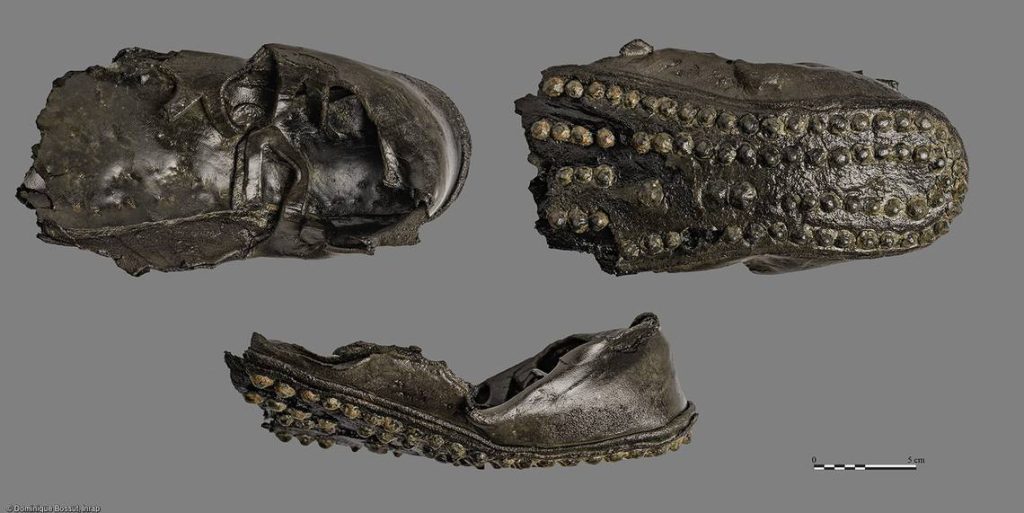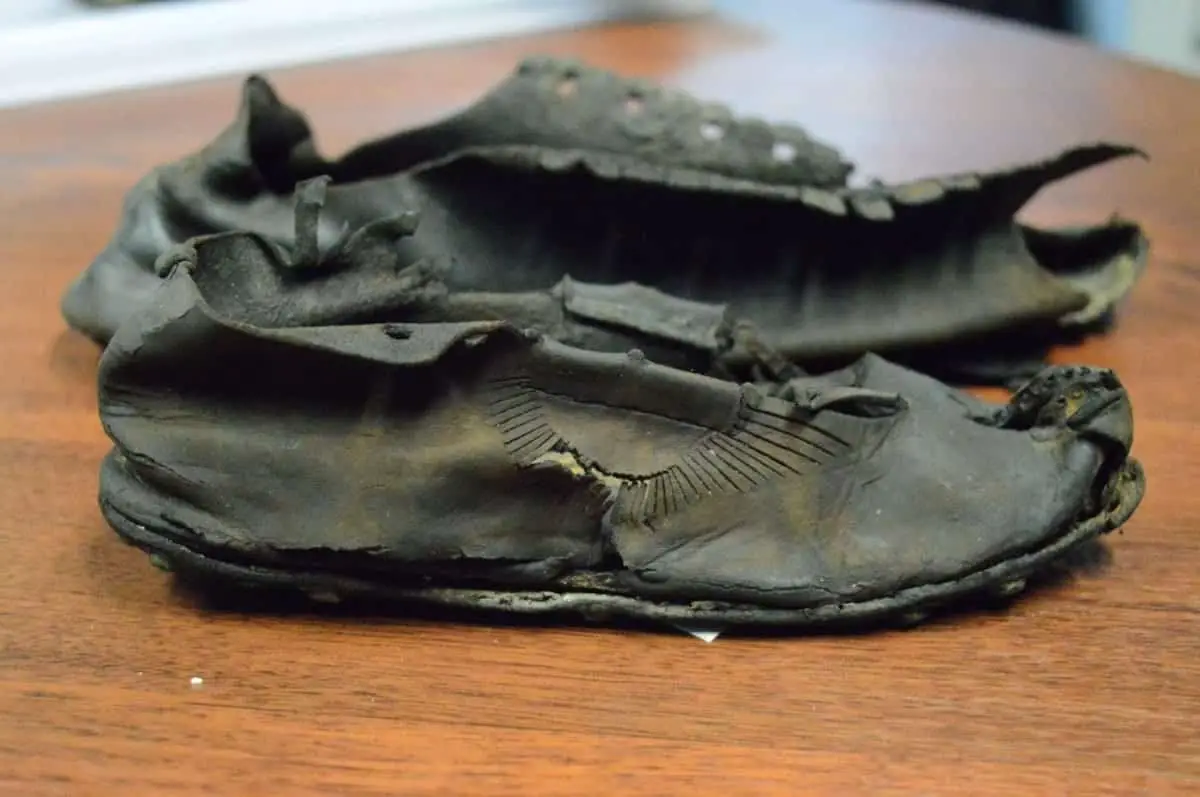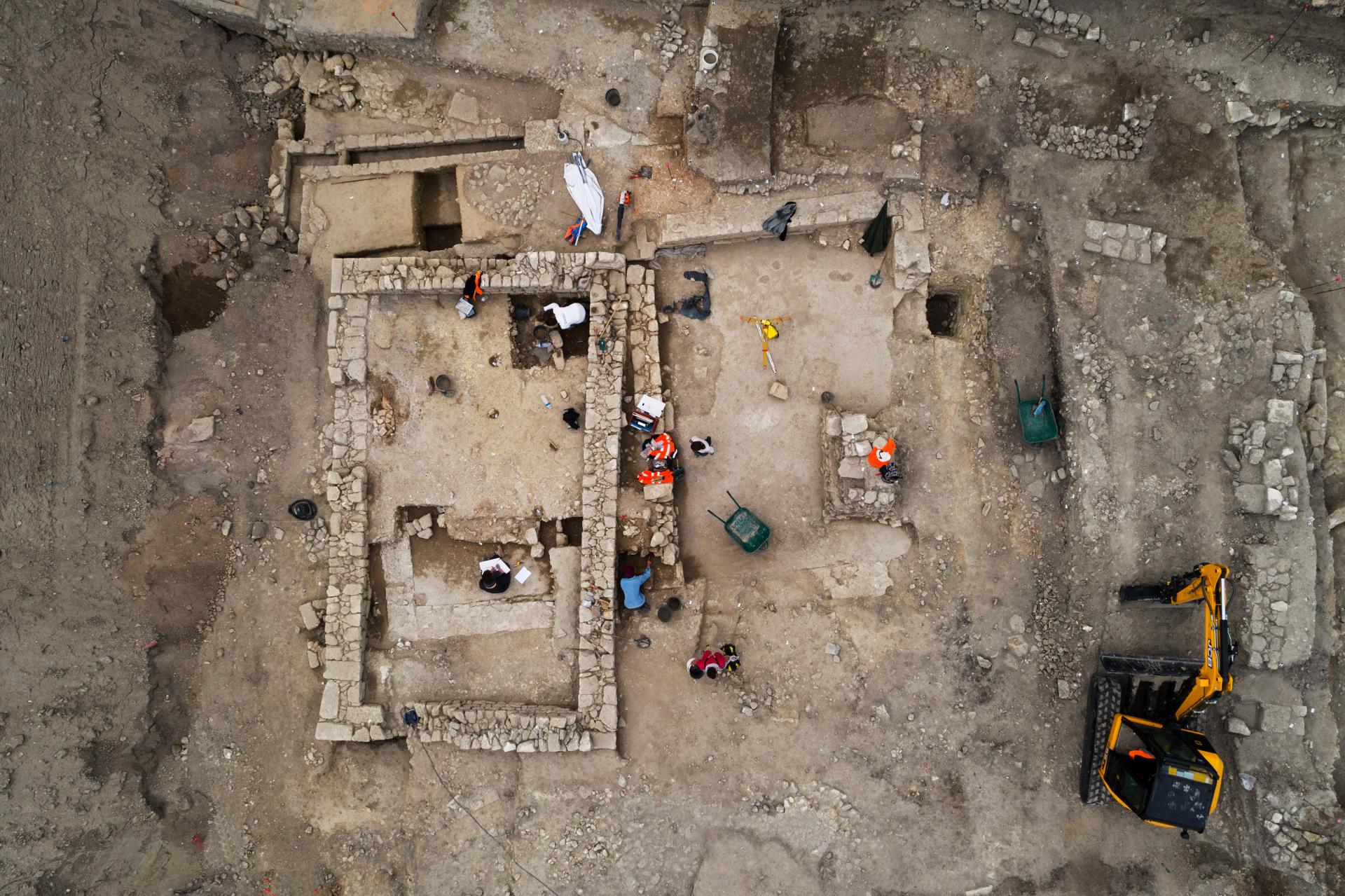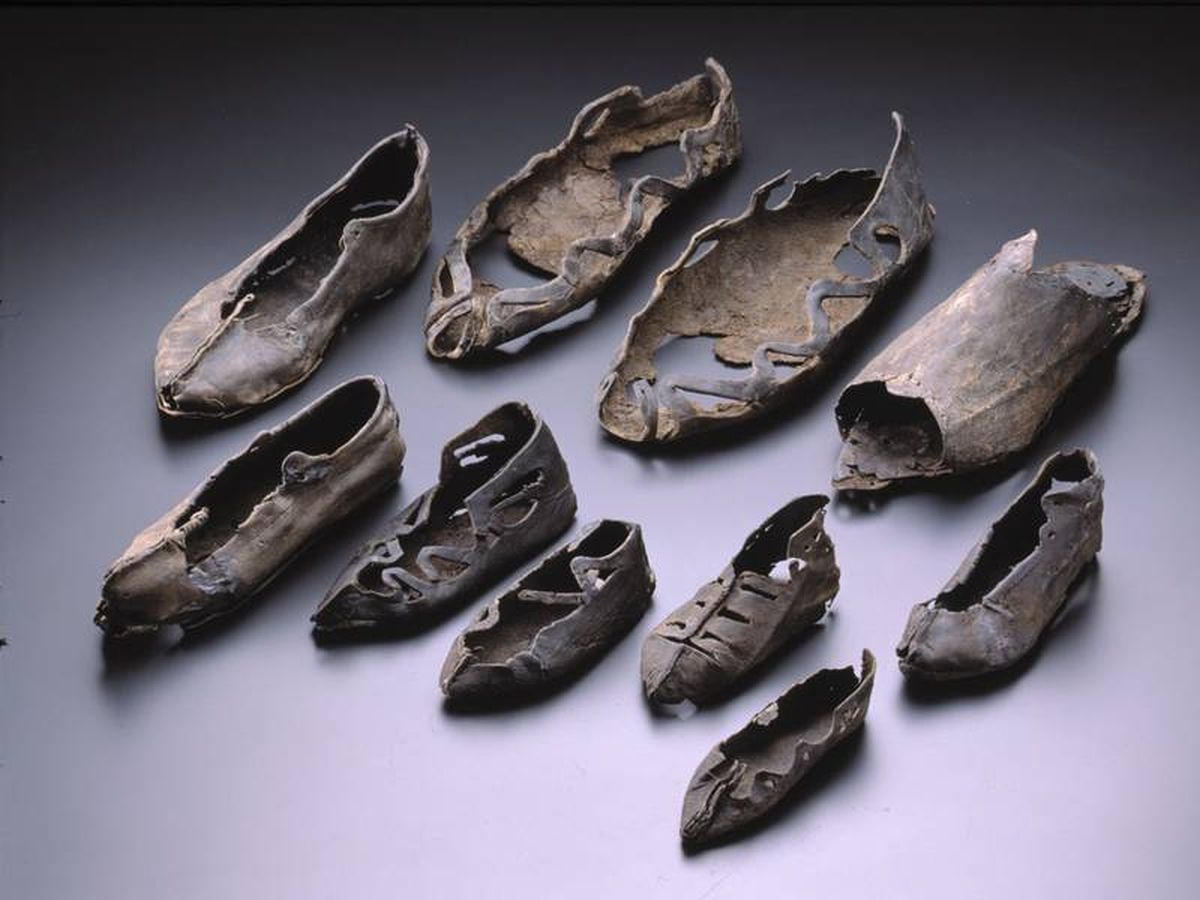Archaeologists excavating in the small village of Thérouanne, located on the river Lys in the Pas-de-Calais department in the Hauts-de-France region of France have made some fascinating discoveries. Scientists unearthed 1,700-year-old Roman shoes that are still in good condition and an exceptional glass workshop.

Roman shoes were discovered in the channeled channel of the “Lys” during the excavation of Thérouanne (Pas-de-Calais) in 2023. Credit: Dominique Bossut, Inrap
Scientists from INRAP report the excavations are part of a development project which provides for the opening of a wastewater treatment plant on the site of the area investigated. The ancient site unearthed during the excavation corresponds to a craft district that developed during the Early Roman Empire to the city’s south-east, along a canalized channel of the “Lys.”
Being so close to the river, the ancient site was quickly covered by a layer of sediments, reaching a 2.50 m to 3 m thickness, which preserved it remarkably well.
Ancient Roman Craft District
Based on the studies, the research team determined the ancient remains correspond to a craft district, mainly represented by two buildings laid out along a road perpendicular to the axis of the canal.
One of the buildings is in an exceptionally well-preserved condition with high walls and associated silt floors, conditions rarely observed in peri-urban areas where the remains of buildings are usually kept below the circulation levels, at the level of the foundations.

View to the northwest on the canal in the foreground and the glass workshop in the background. Credit: Frederic Audouit, Inrap
“Even more exceptional, it is the workshop of a glassmaker. A cylinder of blue glass was also discovered, intended to be melted down, and a “drip” of equally blue glass was in a furnace’s filling. The excavation of the building (still in progress) has identified several phases of occupation related to ovens. The rearrangements of the space (including one following a fire) seem to indicate an activity extended over time,” the INRAP scientists write in their press release.
The excavation of the channel yielded a very large quantity of butchery rejects of cattle bones.
During the ancient period, the activity of butchery was accompanied by related activities (tannery, tablet making, manufacture of glue).

Scientists found several leather shoes close to the channel with studded soles and numerous triangular leather scraps. The discovery suggests there was once a shoemaker present here who, like the butchers, would have used the river as a dumping ground.
At the site, archaeologists also found fragments of millstones were discovered on the site, some of which are too large to correspond to manual millstones, seeming to indicate the presence of a mill, probably located not far from the canal discovered in the excavation area.

Several ancient artifacts were found at the site. Credit: INRAP
it is the first discovery of an ancient canal built during this period in Nord-Pas-de-Calais. The excavation of the levels located at the bottom of the canal is very complex because the constant rising of the water (the site was completely flooded three times during the intervention) prevents the stratigraphy from being recognized. However, the few tests carried out in the sediment yielded abundant and extremely well-preserved artifacts. There are many coins, small bronze objects with gilding, stilettos, brooches, and fine golden brooches.
View of the excavation site and the glass workshop. Credit: Frederic Audouit, Inra
Larger objects were also discovered, such as gaffs (objects relating to shipping), keys, plates, and metal rods, a large exogenous pebble and grooved in length, which undoubtedly served as an anchor or ballast for a net.

See also: More Archaeology News
The discovery of a Medieval building offers evidence the site was used after the Romans left the area. More excavations will provide a better historical timeline of the events that occurred here during the Roman period and afterward.